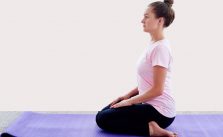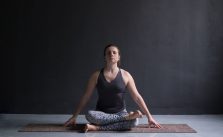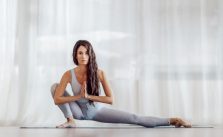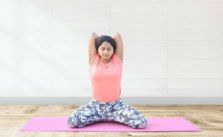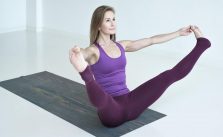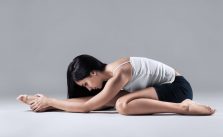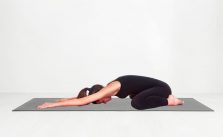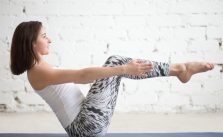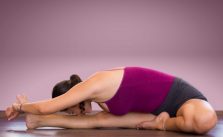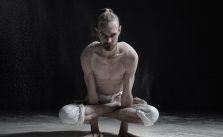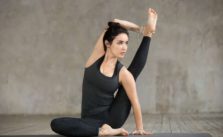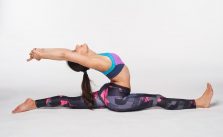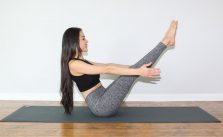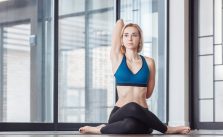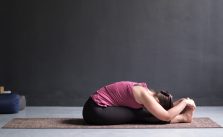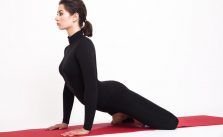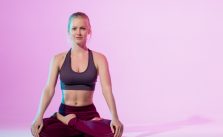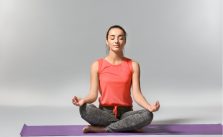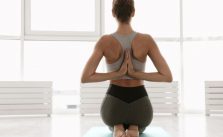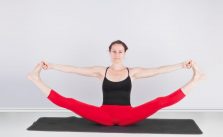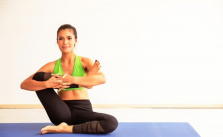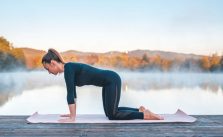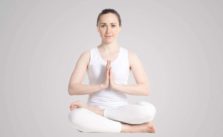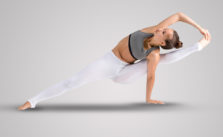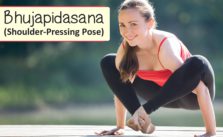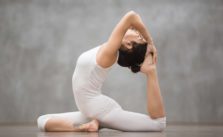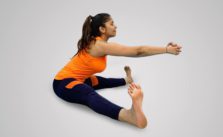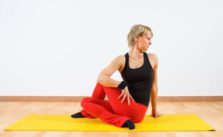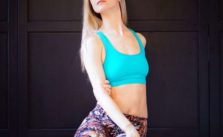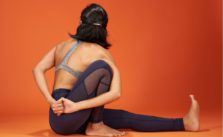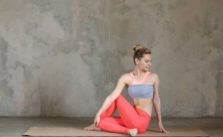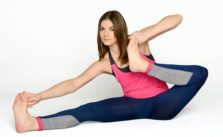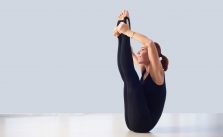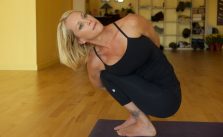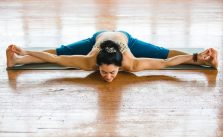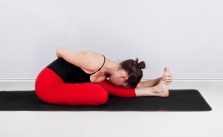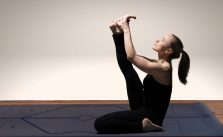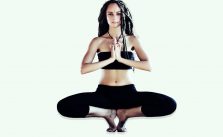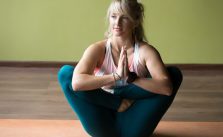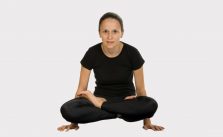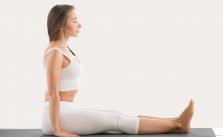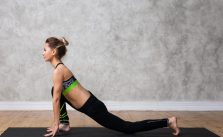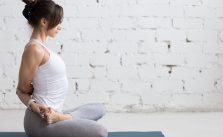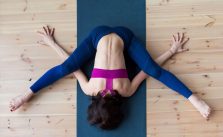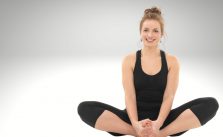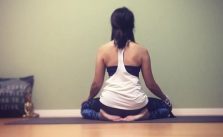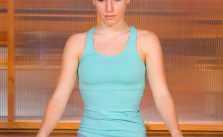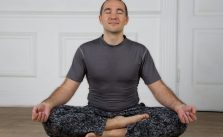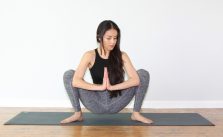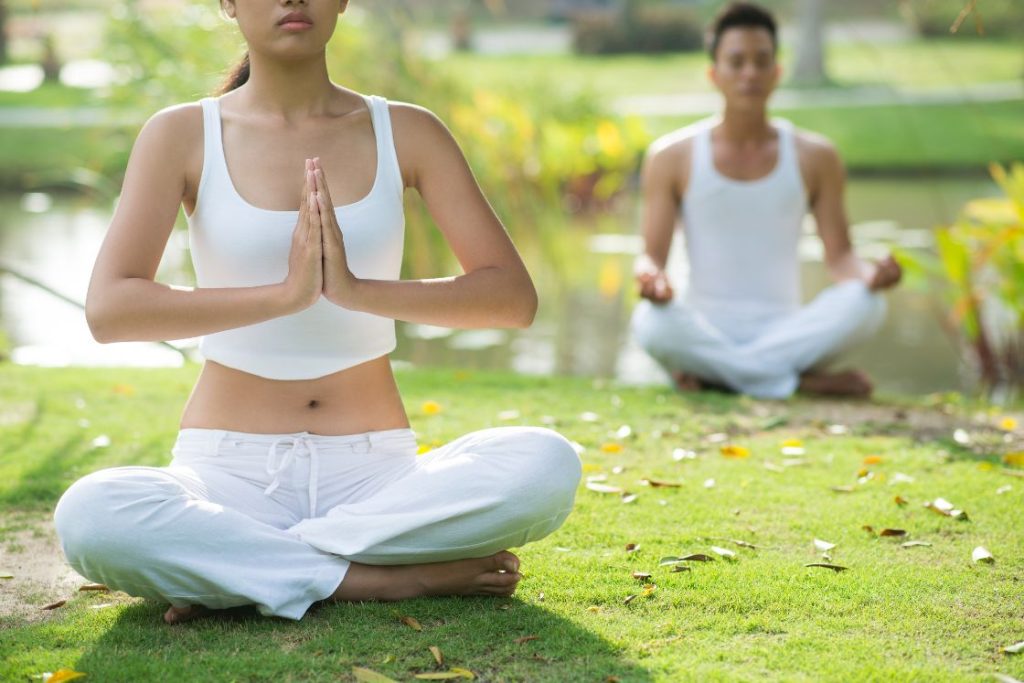
Seated yoga poses involve sitting on the floor, a yoga mat or a yoga chair with the legs and/or buttocks close to the surface. These poses come in different variations, including straight and cross-legged postures, forward folds, and twists, all of which target the lower body.
Seated asanas are especially useful for people who spend long hours sitting at a desk or in a sedentary position. Practising seated asanas help to release tension and improve circulation in the lower back, hips, and legs, which are areas that are commonly affected by prolonged sitting.
Based on the torso and leg positions, seated yoga poses can be categorized into 3 types:
- Straight-Legged Seated Poses – Staff Pose (Dandasana), Seated Forward Fold (Paschimottanasana), Head-to-Knee Forward Bend (Janu Sirsasana), etc.
- Cross-Legged Seated Poses – Easy Pose (Sukhasana), Lotus Pose (Padmasana), Half Lotus Pose (Ardha Padmasana), etc.
- Vajrasana group poses – Virasana (Hero Pose), Vajrasana (Thunderbolt Pose), Gomukhasana (Cow face Pose), Bhekasana (Frog Pose) etc.
Practising seated yoga poses can help you feel more grounded, centered, and relaxed. Some of the benefits include increased flexibility, improved posture, enhanced concentration, reduced stress, and a calmer mind. Seated poses also help to stimulate the digestive system, improve breathing, and promote overall physical and mental well-being.
When it comes to stretching, most seated positions focus on the legs and hips, however, there are a handful that also target the arms, chest, and shoulders.
Seated Asanas in Yoga
Benefits of seated yoga poses
Seated poses in yoga focus on lower body strength and flexibility, these poses can help to improve overall posture and stability. The calm and meditative nature of seated poses can help to reduce stress and anxiety while improving mental clarity and focus. By utilizing props such as blankets, blocks, and bolsters, practitioners of all levels can achieve safe and proper alignment in each pose, leading to improved joint health and a reduced risk of injury.
Some more benefits of seated asanas are described below;
- Improved posture and spinal alignment – Seated yoga poses such as Sukhasana (Easy Pose) and Dandasana (Staff Pose) help to improve alignment and posture of the spine, reducing strain and tension in the back and neck.
- Increased flexibility in hips, legs, and lower back – Seated poses such as Janu Sirsasana (Head-to-Knee Forward Bend) and Paschimottanasana (Seated Forward Bend) target the hips, legs, and lower back, increasing flexibility and range of motion in these areas.
- Reduced stress and anxiety – The meditative nature of seated poses such as Padmasana (Lotus Pose) and Ardha Padmasana (Half Lotus Pose) helps to reduce stress and anxiety, promoting a sense of calm and relaxation.
- Improved digestion and circulation – Certain seated poses such as Marichyasana III (Seated Twist) and Navasana (Boat Pose) can help to stimulate the digestive and circulatory systems, improving overall bodily function and health.
- Strengthened core and pelvic floor muscles – Many seated poses such as Navasana (Boat Pose) and Baddha Konasana (Butterfly Pose) require the engagement of the core and pelvic floor muscles, leading to increased strength and stability.
- Increased awareness and mindfulness – The meditative nature of seated poses helps to cultivate awareness and mindfulness, promoting a greater sense of self-awareness and introspection.
- Reduced risk of injury through safe alignment – By utilizing props and proper alignment, seated poses such as Sukhasana (Easy Pose) and Virasana (Hero Pose) reduce the risk of injury to joints and muscles.
- Enhanced mental clarity and focus – The meditative nature of seated poses such as Vajrasana (Diamond Pose) can help to improve mental clarity and focus, reducing mental distractions and increasing productivity.
- Improved joint health – Seated poses such as Gomukhasana (Cow Face Pose) and Garudasana (Eagle Pose) help to improve joint health, reducing stiffness and pain in the joints and improving overall flexibility.
Tips for practising seated poses
While seated poses are in themselves considered easier than some other yoga forms, you can follow these tips to make your practice comfortable.
- Placing your sitting bones on a yoga block, cushion or bolster will elevate your hips, which can help align the spine.
- In case of tight hamstrings, you can keep your legs straight or use a strap to gradually increase mobility.
- During forward folds, use props to support your upper body.
- Use folded blankets under the knees and ankles for additional padding and cushioning.
- Slow deep breathing during sitting poses can help in holding poses for a longer duration and getting into a meditative state.
- You can also practice seated poses on a chair if, due to any reason, you cannot sit on the ground for prolonged time periods.
